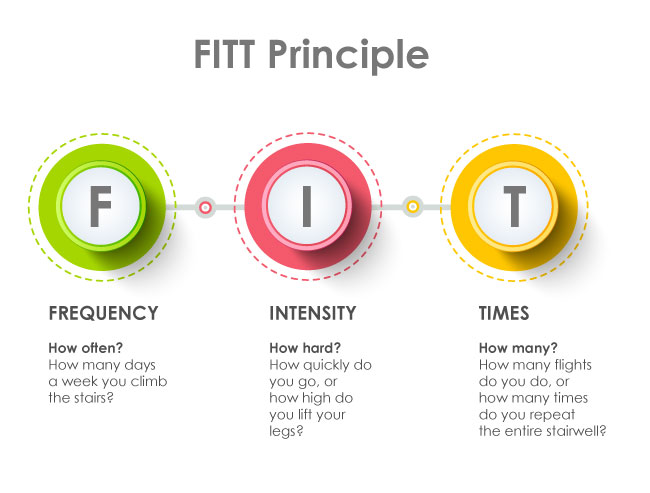
The common flight of stairs – how we revile them! Those instruments of torture, those perpendicular persecutors of pain. We know all too well of their propensity for making heavy breathers of us, of their causal link to those unsightly sweat stains on the chest, back and armpits of your button-down shirt. What shivers of horrors overtake us when we see one positioned ominously next to an elevator with an “out of service” sign tacked sardonically onto it.

But we on the Wellth team see the much maligned set of stairs in a wholly different light.
To us the stairs can represent the ground floor of a health and wellness program, and one that’s free in the making (what we love to call a FREEsource). After all, stairs are everywhere – so it’s almost certain there is a flight or two in your office or building. When you scribe FREE into cost column of your health and wellness budget ledger they suddenly begin to take on a far less foreboding demeanor, even more so when positioning them against the price tag of a new elliptical machine. You might even find that your “staircase challenge” program actually saves your company some money, what with the fewer elevator cycles and all. And recent research (Brief Intense Stair Climbing Improves Cardiorespiratory Fitness – the American College of Sports Medicine) has shown that short, challenging bouts of exercise can be just as beneficial as longer, more paced-out activities.
Stair climbing can also be ramped up using the FIT principle, a common method for measuring the effectiveness of a training regime. FIT stands for Frequency, Intensity, and Times, and can be used to prescribe steps needed to make the most of the exercise activity.

As general fitness improves you can increase the number of times a week the stairs are taken (frequency), how quickly the participant goes up them (intensity), and how many flights of stairs are done in one session (times). So it can start as easily as a dozen or so steps and progress in difficulty almost infinitely.

Just make sure you take the opportunity as a company to get involved. The cost-savings of an active health and wellness program to a company are well-documented, but the general spirit-de-corps cannot be properly leveraged unless the employees equate it back to the organization. Remember to give it a name, circulate it around the office, reward or incentivize the activity with small gifts or reminders. Brand it and they will come!

So fear not the stairs, they may be one of the most powerful, engaging and effective health and wellness assets your company has at its disposal.
__________________________________to boot!
__________________________and free
__________________in place
__________already
One that’s

